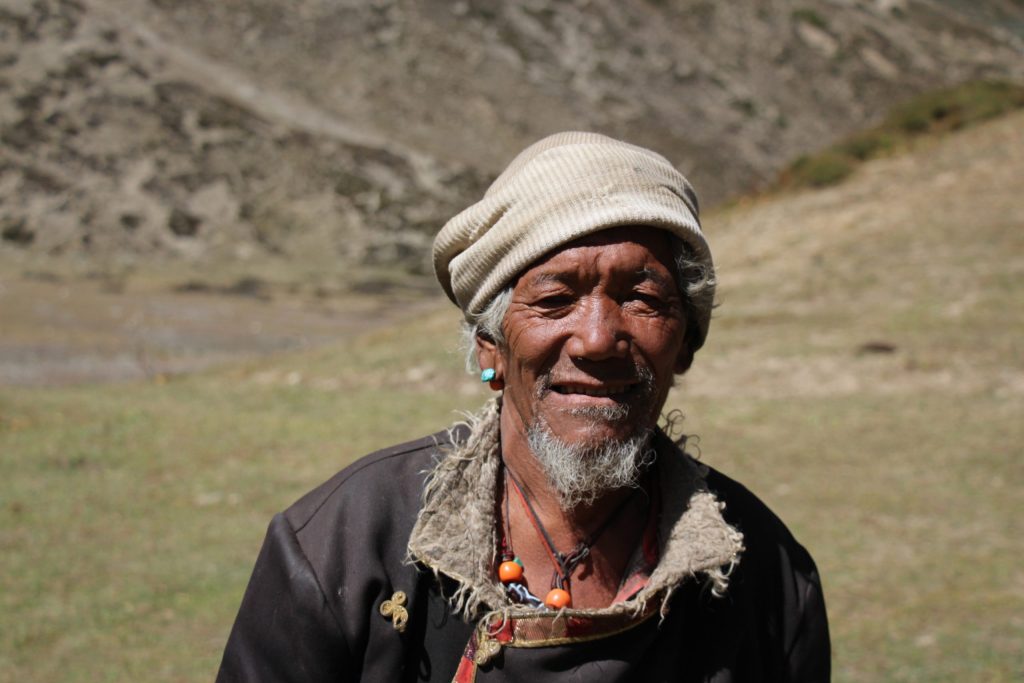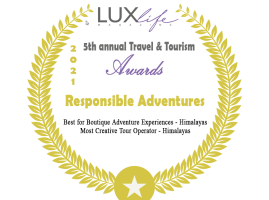People Of Nepal Race And Ethnicity

People of Nepal – Race and Ethnicity. This is a short article on the misuse/misconception of differentiating factors amongst our fellow Nepalese on Caste and Languages. I am not qualified as an expert, but these are my thoughts after spending nearly 30 years speaking to the elders of various communities in the country. It is not rocket science – after all, 1+1 always = 2 no matter what formulas are used. There are two primary races in Nepal. i) The Indo-Aryans or the Indo-Nepalese ii) The Tibeto Burmans or the Tibeto-Nepalese People of the Tibeto-Burman race came to Nepal in different periods from Mongolia and Tibet. The Kirats came from the East and Ruled Kathmandu sometime in the 7th or 8th centuries. The Tamangs and Gurungs came to fight with a ruler of a small kingdom in the Indian Subcontinent. While returning to Tibet, after their victory over the principality, some realized that the land here was more fertile with warmer weather and decided to settle in these hills, known as Nepal today. The Sherpas settled in Nepal between 600-700 years ago, and other ethnic groups’ migration has continued over the centuries. Although the Indo-Nepalese migrants were latecomers to Nepal compared to the migrants from the north, they have come to dominate the country not just in numbers but also in society, politics, and the economy. They achieved early dominance over the native and the northern migrant populations, primarily because of the superior formal educational system they brought with them. Their domination has had tremendous significance regarding ethnic, bureaucratic, and political power structures. In the first two groups, the direction of their migration and Nepal’s landscapes appeared to have led to their vertical distribution; most ethnic groups were found at particular altitudes. The first group, Indo-Nepalese origin, inhabited the more fertile lower hills, river valleys, and Tarai plains. The second dominant group consisted of Tibeto-Mongol origin communities, occupying the higher elevations from the east to the west. Finally, the third and much smaller group comprised some tribal communities, such as the Tharus and the Dhimals of the Tarai; they may be remnants of indigenous communities whose habitation predates the advent of Indo-Nepalese and Tibeto-Mongol elements. When you arrive in Nepal, you might hear someone introduce her or himself to you in this manner: 1) “Hello, My name is Chudamani Adhikari. Chudamani is my name, and Adhikari is my caste”. 2) “Hi, John, nice to meet you. My name is Indra Hang Limbu, and I am from the Limbu caste. 1) Chudamani is half-correct, as Adhikari is one of the many clans within the Brahmin Caste. 2) Indra is incorrect, saying his Caste is Limbu. Limbu is an ethnic group that has its clans and sub-clans. For the Hindus, their last names reveal the Caste they belong to. As the Indo-Nepalese were the pioneer educators, they taught the Tibeto-Nepalese that their surname and Caste are the same, hence the misconception. As mentioned above, the Hindus have a caste revealed by their last name. In the case of the Tibeto-Nepalese, their last names show either their Ethnic group and clan or sub-clan. For example, The Rai ethnic group has different clans and sub-clans. They also have a staggering 14 dialects within their ethnic group. This is the most dialect within a single ethnic group. In 2011, The Nepalese government mentioned that there are 123 mother tongues/languages. The Tibeto-Nepalese speaks most of the dialects. I believe they are variant Dialects of the Tibeto-Burman language. Marriages. Most people in Nepal used to marry within their castes and ethnic groups. When the marriage occurs between two different castes of the Indo-Aryan race- it is called an intercaste marriage. It is also called intercaste marriage, when persons of two different ethnic groups get married. Technically it is a marriage within the Tibeto Burma race but between two other ethnic groups. A marriage between an Indo-Aryan and a Tibeto Bruman is also called intercaste; in reality, it should be called interracial marriage. For Details on Caste Read about The Sherpas Check out our Trekking packages for Nepal, Bhutan, India, and Tibet.
Who Are The Sherpas And What Do They Do

Who are the Sherpas, and what do they do? If you have read books about early exploration in the Himalayas during the early 20th century to the mountaineering expeditions until recently, you would most likely have read, “My Sherpa carried this much, or this Sherpa could do this unbelievable feat in such height altitude with a load like that” etc. I have heard trekkers say many times, “How many Sherpas will accompany us or meet my incredible Sherpa or my Amazing Sherpa guide.” Let me clear this up for you. Reading early books of explorers in the Himalayas has made you believe that a Sherpa is a porter, especially at high altitudes, or all porters are Sherpas – not true. A brief history of the Sherpas – Who they are. First, the Tibetan words derive from Shar (east) and Pa (people) – People of the east. Some oratory history has it that they originated in the Kham region of Eastern Tibet. They moved west searching for grazing pastures for their animals and traded 600 -700 years ago. In the past days, there were no borders on the higher grounds below the mighty Himalayan peaks. They crossed over Nangpa La pass into the Solu Khumbu district of Nepal and settled in a gentler climate with fertile land. Solukhumbu is also home to Mount Everest and Sagarmatha National Park. The Khumbu valley, which lies in Mount Everest’s shadow, is home to hundreds of Sherpa families. Another version is that they moved into Solukhumbu, permanently fearing religious persecution. Most of them are Buddhists, although a growing number are now Christians. Their language is related to other Tibeto Burman languages spoken in Nepal, Myanmar, India, China, and elsewhere. Like most high Himalayas inhabitants, The Sherpas only had two names – the day they were born was their first name and a given name, e.g., Mingma Tsering, but today it will be Mingma Tsering Sherpa. They added the name Sherpa because the Hindus of Nepal required a surname for official documents/work, so to adapt to the requirement, they included Sherpa as their surname, and they are renowned the world over with that last name. Their role in tourism. The Sherpa people’s economy and culture changed dramatically in the early 1900s when the British survey and mountaineering expeditions made Mount Everest the ultimate destination for climbing. This was the beginning of the modern era of significant mountaineering tourism. In the past, it was sacrilegious to climb mountains as The Sherpas and Hindus believed the mountains were where the Gods lived. In the 1950s, Nepal opened its doors to the outside world, coinciding with mountaineers’ mad rush to see who could bag the first 8000-meter summit. This rush exposed the Sherpas’ prowess in the high-altitude world. They have set and broken several mountaineering records over the decades. They are the real Super Heroes of the Himalayas. They have set and broken records and are listed in The Guinness book of records; some have won National Geography’s Adventurers of the year awards. Here are a few names : Pasang Lhamu Sherpa became the first Nepalese woman to climb Everest. Updated 29/6/2018 Ngima Nuru became the first person below 40 to reach the summit of Everest 21 times. It seems he will be setting new Everest Summits for many years to come. Kami Rita Sherpa reached the summit of Everest a record 22 times. He has reached the summit of Everest 25 times in 2021. Lhakpa Sherpa broke her record a year ago to reach the Everest summit nine times, making her the women’s world record holder. Apa Sherpa is the first to have climbed Everest 21 times – a fellow Sherpa has broken this record. Phurba Tashi Sherpa has been featured on Discovery Channels’ Everest – Beyond the limit and, more recently, on Sherpa – The Movie. He is also the record holder of 34 summits of mountains above 8000 meters. They have set and broken many speeds ascend Everest records in less than 10 hours. Nima Jangbu Sherpa became the first woman to climb Lhotse, Everest, and Kanchenjunga within 25 days. She is also the first Nepali woman to summit Kanchenjunga. Pemba Gyelje Sherpa, Lhakpa Tseri Sherpa, and Pasang Lhamu Sherpa Akita have won Nat Geo’s Adventurer of the year awards. In the 1960s, commercial trekking was introduced in Nepal. Now Sherpa became a designation – an assistant guide who would walk with the clients, set up tents, serve the meals, help weak trekkers or even carry a sick or injured trekker to safety. Later on, anyone who did this job was called a Sherpa despite being from any other ethnic group. The late 1980s and early 1990s saw a further change in their roles in tourism. Some started their trekking and mountaineering companies, while others on the main trail to Everest base camp and adjacent valleys built “tea-houses” to serve the early backpackers. Now the teahouses have been transformed into beautiful lodges, with some having en-suite bathrooms and even electric blankets! With the income from being tourism entrepreneurs, the older Sherpas have realized the importance of education. As a result, today, there are very successful Sherpas in all professions from being Doctors, Engineers, Pilots (flying both in Nepal and International airlines), contractors, owners of airlines, helicopter companies, own luxury hotel chains in the mountains, and are in other businesses to name a few trades they have adapted to now. There is still considerable pride amongst the Sherpas, who support mountaineering expeditions as guides. They believe they make US$4000-US$6000 from 2-month work plus bonuses from grateful clients. This amount is nearly double what people in a city like Kathmandu need to sustain a small family in a year. But, of course, the Sherpas and their families know how dangerous mountaineering is; a considerable number of families have resettled overseas, especially in the U.S.A. As a result, the highest number of Sherpas outside Nepal can be found in the U.S.A. Check out our Trekking packages for Nepal, Bhutan, India,
















